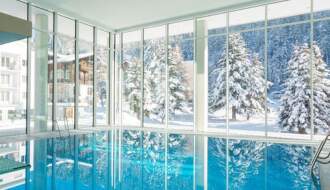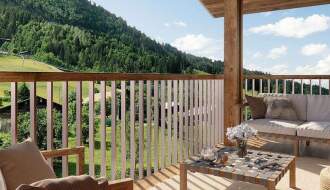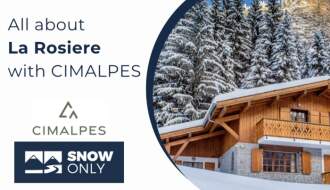Your viewing trip to see the shortlist of homes you’ve narrowed down is one of the most important stages of the buying process – and will help you settle on the property you put an offer in for. We’ve already written about buying a new-build home in a development, but what about if you’re purchasing a resale ski home? What should you look for and check?
1. Existing fittings and furnishings
If you’re buying an already-lived in property, find out what will be left behind by the vendor – if they have a top-quality fitted kitchen, and you like the style, then you could find a big saving by not having to redo. Equally, if white goods are staying, and they’re in good working order, then that’s one less thing to consider.
Have a look at the age of the boiler – if it’s new and, even better, still under warranty, you could find yourself saving thousands of euros compared to an older one that will soon need replacing. A slightly higher price for the property could actually work out as an overall saving.
2. Building quality and condition
It’s inevitable that a resale ski property will have a certain degree of wear and tear, but, ideally, the building should be well maintained, whether by the owners or a management company in an apartment block.
On the outside, have a look at the roofs and guttering – are they unblocked and in good condition? Inside and out, look carefully for signs of damp, especially in bathrooms without a window. This includes looking behind any appliances, like a fridge, and around the windows, where condensation can collect.
Condensation can be relatively easy to solve – by replacing older windows, ensuring there is good ventilation (always important in ‘well-sealed’ homes designed for colder climates) or installing dehumidifier systems. Penetrative and rising damp can be more problematic, so do be careful and find out the source if you spot any signs of these two.
3. Energy efficiency
A new-build will often be built to higher energy-efficiency standards than a resale ski home, especially one dating back a few decades. However, the previous owner could have carried out numerous improvements, so talk to your agent as well as obtaining the energy efficiency certificate. Consider careful the potential efficiency on the certificate – it could help to make the property much more cost-efficient in the future.
4. Wiring and plumbing
Try and test all appliances and fittings to have an idea of the quality of the wiring and plumbing. If you’re in a block of apartments, especially, how is good is the water pressure? Open every tap and shower if you can, or at least the one furthest away from the water source. Flush each toilet and check that it fills up properly.
Wiring is a little harder to tell, especially if you’re not an expert. However, do ask the agent to help you locate the fusebox and have a look at how new it is. Have a basic look at any wiring you can see, to make sure that it all looks normal and not a bit of a ‘bodge job’.
5. Rental potential
If you’re looking for an investment purchase to rent out, one big advantage of a ski resale property over a new-build is that it might have some form of rental history. If it has been rented before, ask the agent or vendor what it has previously gone for, either as a long-term or as seasonal averages for a holiday let. See if you can find out occupancy rates, too.
For longer-term season lets, you could also have a look at ‘let agreed’ prices on letting sites, to have an idea of the most up-to-date prices people are willing to pay in similar buildings or properties.
To learn more about how to safely buy a ski resale property, from finding the right agent to putting an offer, paying your deposit and registering the transaction, don’t miss your free Buying Guides.




 Apr 15, 2024
Apr 15, 2024

